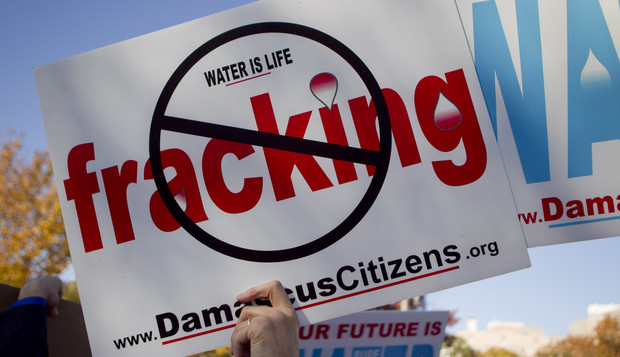Published on Friday, January 17, 2014
‘America’s energy policies must reduce our dependence on fossil fuels, not simply reduce our dependence on foreign oil.’
– Jon Queally, staff writer
While President Obama made a big deal out of delaying the northern half of the Keystone pipeline’s construction, he compensated by signing an executive order to expedite similar infrastructure projects everywhere else. (Photo/Matt Wansley via Flickr)Citing the glaring gaps between his sometimes encouraging rhetoric and the realities of his fossil fuel-laden policies, eighteen environmental, environmental justice, and public health advocacy organizations have written a pointed letter (pdf) to President Obama slamming his “all of the above” energy strategy as a “compromised” approach that “future generations can’t afford.”
The coalition behind the letter—which includes the Sierra Club, Friends of the Earth, NRDC, the Energy Action Coalition and others—is upset that Obama voices concern about climate change in lofty speeches and with compelling promises even as he oversees the most dramatic push in oil and gas extraction in a generation, continuing an aggressive fossil fuel expansion despite what the climate science is saying about the urgent need to dramatically cut carbon emissions.
“You can’t have it both ways,” said Sierra Club’s executive director Michael Brune in an interview with the Washington Post, which received advanced notice of the letter that was sent to the White House on Thursday.
“In the coming months your administration will be making key decisions regarding fossil fuel development — including the Keystone XL pipeline, fracking on public lands, and drilling in the Arctic ocean — that will either set us on a path to achieve the clean energy future we all envision or will significantly exacerbate the problem of carbon pollution.”
From the letter:
We believe that continued reliance on an “all of the above” energy strategy would be fundamentally at odds with your goal of cutting carbon pollution and would undermine our nation’s capacity to respond to the threat of climate disruption. With record-high atmospheric carbon concentrations and the rising threat of extreme heat, drought, wildfires and super storms, America’s energy policies must reduce our dependence on fossil fuels, not simply reduce our dependence on foreign oil.
As the Post reports:
The criticism came on the same day that the fossil-fuel industry and its congressional allies began separate efforts to challenge the administration’s environmental policies. That suggests that the White House will have to marshal additional resources to defend the work it is already doing to address climate change.
The American Petroleum Institute announced a new advertising and electoral campaign that will promote domestic oil and gas production. At the same time, Senate Minority Leader Mitch McConnell (R-Ky.) asked the Government Accountability Office to determine whether the Senate can use the Congressional Review Act to reverse a proposed rule to limit carbon emissions from new power plants.
Though President Obama has yet to make a final decision on approval of the contoversial Keystone XL pipeline, the green groups applauded his previous comments on the project when he said the climate impact of the tar sands pipeline would be a key aspect of the overall determination. The groups want to see that standard now applied to all fossil fuel related projects in the country.
“We believe that a climate impact lens should be applied to all decisions regarding new fossil fuel development,” the letter continues, urging Obama to replace his focus on coal, gas, oil, and nuclear development with a new paradigm that champions “carbon-reducing clean energy” strategies.
In the coming months your administration will be making key decisions regarding fossil fuel development — including the Keystone XL pipeline, fracking on public lands, and drilling in the Arctic ocean — that will either set us on a path to achieve the clean energy future we all envision or will significantly exacerbate the problem of carbon pollution. We urge you to make climate impacts and emission increases critical considerations in each of these decisions.
______________________________________________
This work is licensed under a Creative Commons Attribution-Share Alike 3.0 License.
